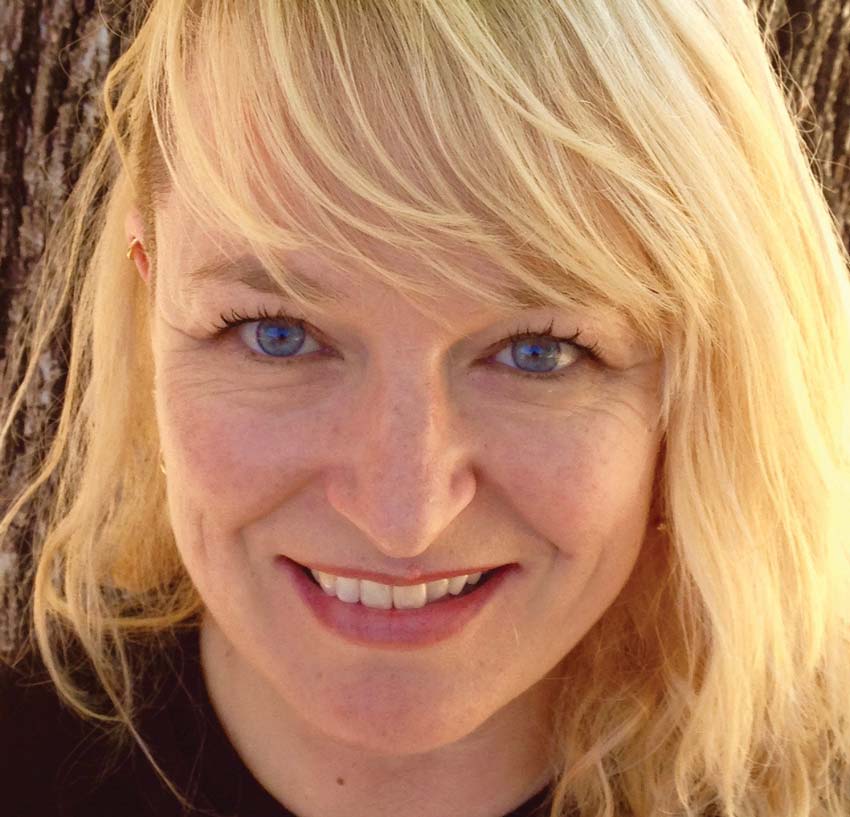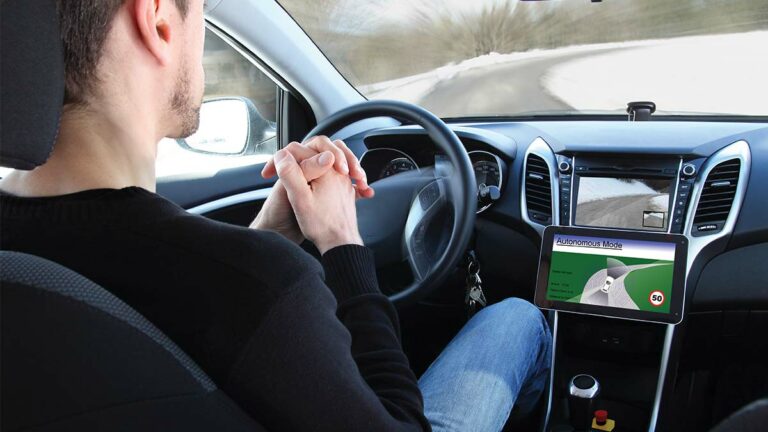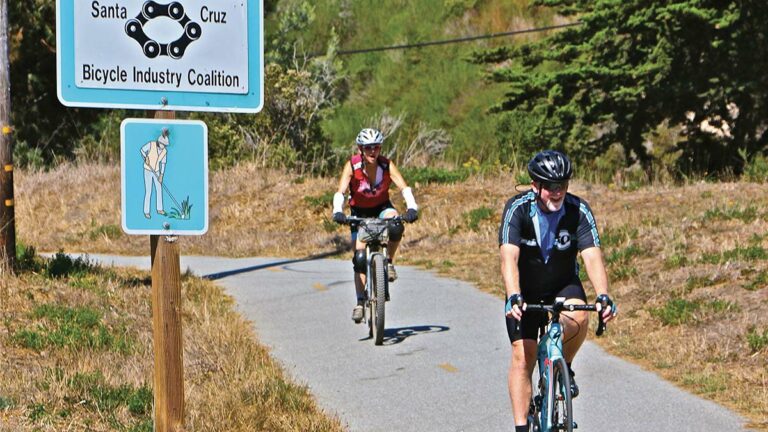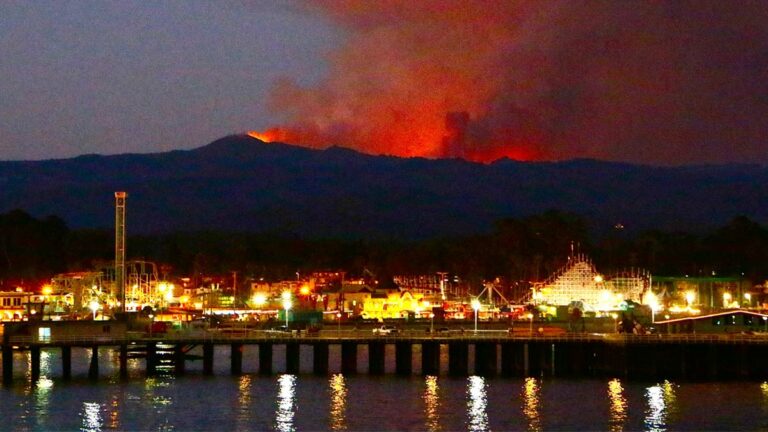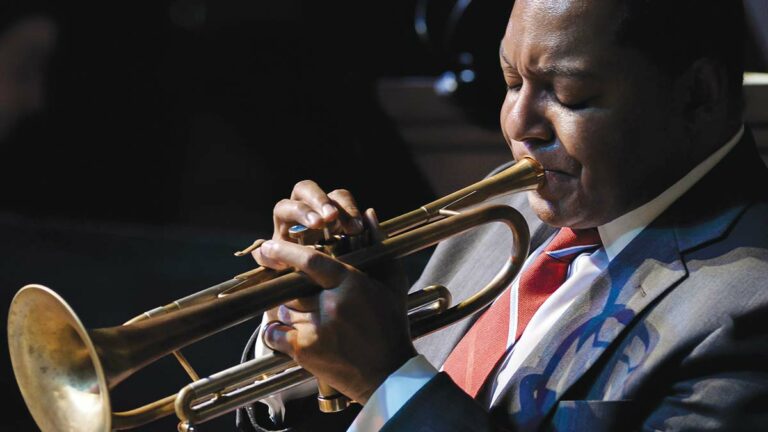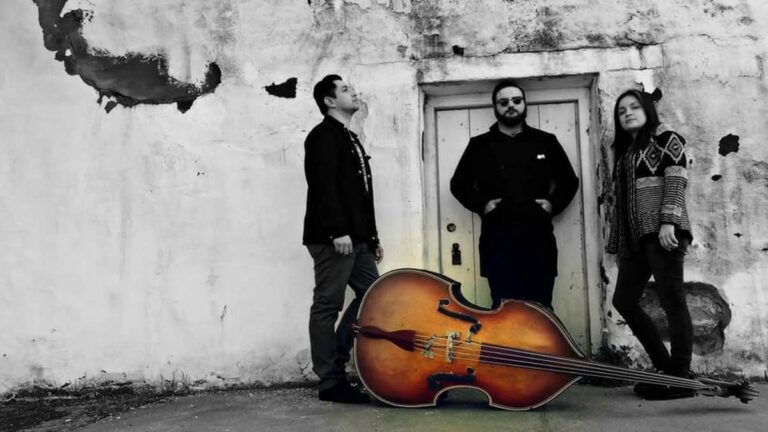After touring an exhibition put on by Yanfeng, the world’s largest auto interior company, I hailed an Uber driver who happened to be on his first day of work. Six fares in and loving it, he sparked up the customary chit-chat, asking what I’d been doing. I stuttered. I didn’t want to deflate his excitement, but I’d just seen the future, and it didn’t include him.
Yanfeng’s San Jose showroom prototype sported a soon-to-be omnipresent feature that will replace virtually any vehicle service that requires an actual driver. But, more cheerily, it’ll also reduce traffic, pollution and death, plus save trillions of dollars. The revolutionary feature? A steering wheel that nestles into the dash during autonomous mode.
Sitting in the glitzy, leather-wrapped faux cockpit, I wondered if America—a land wedded to the lusty mythology of exploring the open road—could ever let automated driving overtake the manual method. Han Hendriks, a Yanfeng vice president with a crisp German accent, sighed and answered with the casual surety of a man hearing this question for the 4,000th time.
“Autonomous flying was introduced to the commercial airline market in the ’70s,” he says. “And without any exception, all the pilots said, ‘Never. I will always fly my plane.’ Today, all pilots fly autopilot. No exceptions.”
To Hendriks, anyone opposed to autonomy is thinking about it wrong. Californians might love to wind through eucalyptus-lined mountain roads and redwood groves. But automated driving, at least the first wave, will take over navigation nobody wants to do—Highway 1-esque straightaways or traffic jams where the average American wastes somewhere between 38 to 81 hours every year.
“Sure, you love driving in your [Porsche] 911 on Sunday,” Hendriks says. “But do you love driving when you’re in a traffic jam every morning? Every evening? That’s a different driving. I love driving, but I hate traffic.”
Assemblymember Mark Stone (D-Scotts Valley), a self-described technophile, is already intrigued by the possibility.
“I love the technology. My one caveat is I love to drive,” says Stone, who wants to be able to take over, when his car isn’t stuck in traffic. Most congestion on roads like Highway 1 and Highway 17, he says, is caused by aggressive driving, and drivers trying to zig and zag around one another, slowing down everyone else on the road.
He adds that people will be tempted to over-react to accidents caused by self-driving cars, but that the vehicles are still safer than the distracted drivers out there who text and such while behind the wheel.
Automated driving wouldn’t just let people nap, work or do whatever in traffic. It would also drastically improve safety and reduce commute times. Intercommunicating cars could “platoon” in columns too tightly packed for humans to ever sustain—an arrangement that’s denser and more aerodynamic. This could end gas-guzzling, stop-start jams and spawn a ripple effect of positives as its usage expands.
“First of all, it’s safety, because 95 percent of all accidents are human error,” Hendriks says. “The second one is cost, because all these accidents cost a fortune—hospitals, insurance, safety systems and so forth.”
The estimated savings are huge. In 2015, 35,000 people died in automobile accidents. In what may sound like a cold calculation, the Department of Transportation (DOT) has computed the value of a human life at $9.6 million—so that’s more than $300 billion, taking into account economic factors, like income.
Additionally, the Centers for Disease Control estimates these deaths represented a work and medical loss of $44 billion. On top of that, 2.3 million people were injured in cars in 2013. The DOT ranks injury costs from minor ($27,000) to unsurvivable ($9.2 million). Needless to say, car accidents add billions of dollars in injuries, as well.
“We could prevent 90 percent of [lives lost],” says Amit Garg, an in-house venture capitalist for Samsung who spends much of his days thinking about the mobility revolution. He notes that it will “create huge amounts of opportunity” and “change the societal landscape.” It will also potentially dislocate the 10 to 15 million people who drive people and things around for a living.
“I think it will be better for us as a society,” Garg says. “Some people will have to retrain jobs. There will be losers in this.”
And for those in favor of a habitable planet, a report by the Intelligent Transportation Society of America claims these cars could chip away at 2 to 4 percent of oil usage and greenhouse gas emissions each year over the next decade. The real reductions will come as we replace gas tanks with batteries and find cleaner ways to make electricity. With pioneers like Tesla, it’s not inconceivable that autonomous driving and sustainable power develop hand-in-hand.
And more immediate than the eventual demise of person or planet, automation offers an otherwise non-purchasable commodity: time.
“The average commute globally is 40 minutes, one way,” Hendriks says. “So now you can give people that two times per day. What is a driver going to do when he or she is in a vehicle with that time? And how is the interior going to support this new activity—this relaxing, working, eating, exercising?”
Road Work
Yanfeng has cooked up some modest but sexy changes. In autonomous mode, the front two seats rotate 18 degrees to facilitate more natural conversations and recline to a relaxed, but not necessarily sleep-inducing angle. The plastic surfaces buzz when touched, then kill the germs left behind in under three hours—a crucial feature for shared vehicles. Tucked into the side panels, LED lights glow in any pigment, pattern or brightness desired. Next to a tablet embedded in the dash, there’s a spot for phones to sit and sync with the car. Between the shins of the front passengers, there’s a cubby for something purse-sized.
Like a collegiate lecture hall desk, a small table folds out of the huge central console toward the driver. The inside of the console is lined with tracks for tambour dividers that can be rearranged to make larger compartments, which could fit a half-dozen books, or smaller “secret” compartments to sock away valuables. All of this sits above a blue-lit mini-fridge that can be pushed open to back-seat passengers at the touch of a button.
Since “80 percent of car use is by one or two people,” Hendriks says, front-riding passengers will be able to fold down the back seats, then extend their chairs horizontally. There, they can gaze at the stars through the sunroof, watch a film on their ceiling or—ahem—engage in other activities for people with time and privacy (facilitated by adjustable window opacity).
Thirty corporations—including Google, Apple, Microsoft, Tesla, BMW, Mercedes, Ford, GM, Honda, Toyota, Volkswagen and Uber—are developing their own vehicles. On Wednesday, Sept. 14 Uber announced it was launching a pilot program of self-driving cars in Pittsburgh. A report by the University of Michigan predicts autonomous functions will be standard on a majority of cars on the road in the 2050s.
These automobiles could drop passengers off at their destination, then wait by circulating on less busy streets or parking themselves in tighter-packed lots. Way out in the future, the car might leave the lot, pick up remotely ordered groceries, nab the kids from a playdate and then snag the original passenger before driving home.
Consider an area like Los Angeles County, where 14 percent of land consists of parking spaces, according to a recent blog for the Los Angeles County Metropolitan Transportation Authority. Autonomous vehicles could help bring about denser city planning, especially if metropolitan areas create sharing systems centered around vehicles similar to the Google Bubble car—an automobile that makes the Fiat 500 look positively macho.
Stripped of a steering wheel, speedy engine, brake/gas pedals and most bulky safety features, these Pixar-esque vehicles could be ideal for ridesharing in low-speed, high-traffic metropolitan areas. Vehicles constantly circulating from one request to the next could be increasingly useful as roughly two-thirds of humanity is projected to live in cities by the century’s midpoint. Last month, MIT spinoff Nutonomy began piloting a small number of autonomous taxis on the streets of Singapore. This month in Pittsburgh, Pennsylvania, Uber will test out 100 self-driving Volvo SUVs, though they will be supervised by human drivers.
“You might have parts of large cities where no human-driven vehicle would be allowed,” says Dorothy Glancy, a lawyer who has been studying the possibilities of automated vehicles for more than a decade. “You’d have a whole bunch of autonomous vehicles available to serve the people in those areas, and it might be considerably safer.”
These advances, however, come with grim news for the job market. Hundreds of thousands of car mechanics and drivers will likely become unnecessary, along with 1.6 million American truckers. Daily, trucks transport 70 percent of all cargo in the United States, or $11.4 trillion of freight. But since deregulation during the Carter administration, this bedrock profession has been transformed into a “sweatshop on wheels,” where drivers routinely work lonely, 10-plus hour days for wages that occasionally work out to less than minimum wage. At the end of 2015, the American Trucking Association reported a shortage of nearly 50,000 drivers, one that’s expected to grow to 175,000 by 2024.
The current landscape is far from perfect. Trucks only account for 1 percent of the cars on the road, but produce 28 percent of vehicle-based pollution. One in seven are empty, leading to increased congestion, and they kill approximately eight people a day in accidents.
To modernize and improve this shipping method, two Google alums—Anthony Levandowski and Lior Ron—founded Otto, a startup pioneering autonomous truck-driving. They seek to retrofit existing trucks with updated sensors, software and other modifications. And they recently completed a test-drive of their technology on a public highway. After further upgrades and research, their goal is to spread to “every corner of the U.S. highway system.” On Aug.18, Uber announced that it had acquired Otto as part of the company’s foray into autonomous driving.
Currently, the most advanced autopilot models—pioneered by Tesla, BMW and Mercedes Benz—don’t trust their cars enough. They allow for cruising on highways, either open or congested, and that’s about it. Despite the limitations, it’s still a wild ride. Hendriks showed me a video of himself bombing down a European freeway at 130 mph in a BMW 7-Series with his hands off the wheel—well, most of the time.
“It’s a safety system where you have to touch the wheel every 15 seconds,” he says. “And that will go away over time because it’s kind of silly. But you don’t need pedals. You don’t need your hands on the steering wheel. The car drives itself. I actually closed my eyes for a minute, just to sense how that feels. It is unbelievable—and you can buy that today.”
Amit Garg and other industry experts will speak on the “Autonomous Vehicles at the Crossroads” panel held Friday, Oct. 7 at the C2SV Technology + Music festival in San Jose.

